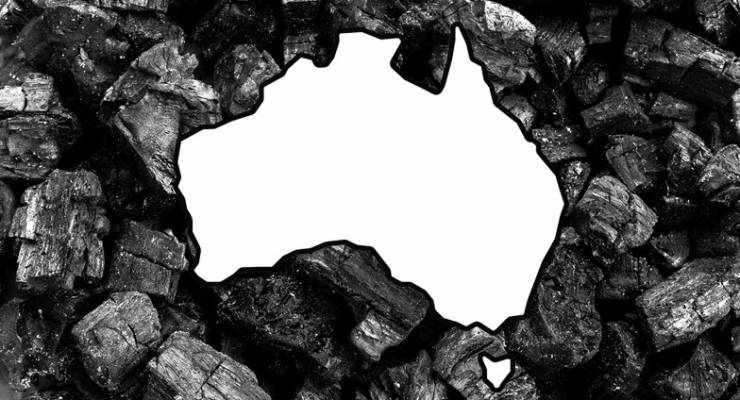
During the global financial crisis (GFC), banks, building societies, and credit unions were allowed access to the Australian government’s AAA credit rating, empowering them to compete for funding on the global market.
Australia’s scheme was more favourable than other countries’. It had no size limit; banks could use the AAA rating for any value of liabilities. It matured later; banks could issue maturities up to a maximum of five years unlike many foreign schemes, which did not guarantee debt beyond three years. There was no end date; it was open “until conditions normalise”.
It was cheaper too, and there were no upfront costs.
The Reserve Bank of Australia later estimated that the government guarantee was worth about $5 billion a year to the banks’ borrowing costs. In essence, it was a subsidy from taxpayers to shareholders. The banking sector received what was termed “the greatest industry subsidy in our history”.
The bailouts to strategic sectors and major corporations during COVID-19 are considerably bigger than the rescue package during the GFC. They also constitute a tremendous opportunity once we begin reconstructing Australia after COVID-19.
The risk absorbed by the taxpayer is more important than the cost. The Commonwealth should be entitled to equity in the major corporations that have received assistance. This should happen now, when share prices are affordable.
And, just as Australian students pay back their university fees once their incomes exceed some amount, corporations should be provided with income-contingent loans. The Commonwealth should retain a golden share of any intellectual property in vaccines or other discoveries funded by the taxpayer.
Just as planning for post-World War II reconstruction began in December 1942, planning for post-COVID-19 should begin now.
One small example: South Australian Senator Rex Patrick has suggested that Ferretti International in Whyalla could build the transmission towers for the SA-NSW inter-connector using Whyalla Steel. Instead of the job going to a foreign competitor on purely price considerations, keeping the work here would boost the order books of an Australian steelworks, create new jobs, and revitalise some of the smaller businesses in and around Whyalla.
It’s a good suggestion that could be taken more broadly.
A fundamental goal of reconstruction should be to increase domestic innovation and higher value-added sectors — such as high technology research and development, advanced manufacturing, and energy efficiency — rather than merely supplying raw materials for other countries to turn into finished products.
Reconstruction should increase Australia’s economic complexity, which is a function of a country’s diversification (the number of products exported). It decreases with ubiquity (the number of countries exporting the same product).
Australia has the lowest complexity of all the OECD countries, and our performance over the last 40 years leaves considerable room for improvement.
Australia’s exports remain highly specialised in a few products such as iron ore, coal briquettes, gold, petroleum gas and wheat — which are typically produced by many other countries.
According to the chief economist in the Department of Industry, Innovation and Science, “Australia’s economic complexity is an anomaly among advanced economies, with the economic complexity closer to that of a developing country”. Australia’s is “comparable to the economies of Kazakhstan, Cambodia, Kenya and Saudi Arabia.”
We have economic growth but not economic development — a condition typically found in imperial-colonial relationships, where an imperial power builds vertical economic linkages back to the economies of the metropolitan centres.
They result in monoculture economies that produce mineral resources and agricultural goods for exports. By contrast, horizontal economic linkages between domestic sectors generate a “spread effect”, such that mining operations enable new domestic industries and workers who are trained for more highly skilled tasks.
Reconstruction should give priority to economic development rather than mere economic growth. This crisis could be our turning point. Let’s not waste the opportunity for change.
Clinton Fernandes is professor of International and Political Studies at UNSW Canberra.








Just as planning for post-World War II reconstruction began in December 1942, planning for post-COVID-19 should begin now.
Excellent suggestions. But the problem is that despite us living in the most wealthy society the world has ever seen, powerful Hard Right ideological groups are united in their determination to see that the benefits of our society go not to us who live in our society, but to those who control it. Morrison is the latest front-man chosen and rewarded to serve their interests, abbott having proven breathtakingly incompetent, turnbull having proven too liberal.
Our ruling clique is focussed on and only on the income- and asset-stripping of our society to feed its greed. Foreign occupation would be of no concern to them as long as it left them free to loot us.
Destroying services to enrich the rich – class warfare – is always the Coalition’s aim, so is morrison’s central aim. Note too that despite morrison being obliged to temporarily adopt socialism to save capitalism, the detail of the measures adopted enriches the capitalists – and the religious sector – wherever possible.
We can be confident that the August Budget will be as brutal as morrison and porter can make it. Likewise that they will remain ferociously opposed to progressive industry policy.
The Australian Government doesn’t need equity in corporations that it bails out, as it does not require revenue (from taxation or dividends). What it does need to do is regulate these corporations so that customers, the public, society, and/or environment receive ongoing benefit.
Great suggestions.
Does anyone in this government have the capacity to inspire a shift from seeing ourselves as the Lucky country to something far more sophisticated.. and the will to implement the changes that will benefit a broader base & generations to come. No. But this article is a constructive way to at least start a public discourse that might result in habituation. It needs to continue. These ideas need to become the new normal rather than eliciting fear of progressive change.
I reiterate that Australia needs now the seeds of a ‘Marshall Plan’, a new Snowy Scheme, but bigger. And that is staring us in the face: Pile into government funded infrastructure to rapidly decarbonise Australia and into research in renewable energy and hydrogen production and export. The express aim should be to make Australia the cheapest producer of energy on earth. Decentralised cheap energy production, untethered from the anachronistic devotion to the preservation of a grid, means that energy can be produced adjacent to major industrial sites, like steel works along the Pilbara coast and aluminium smelters and refineries across northern Australia where massive reserves of bauxite lie. The cheapest steel and aluminium on earth. That will underpin the project to diversify into a truly industrial economy. And it can all be achieved in 20 years with vision, courage and resolution. Let’s think really big. Ask Ross Garnaut for the plan. he has already written the outline.
Agree with that.
New generators, storage – whether battery, hydrogen or pumped hydro.
Build a network of charging stations for electric vehicles. Or hydrogen stations if we produce enough to go to fuel cell electric vehicles.
Build the HSR network – Melbourne, Canberra, Sydney, Brisbane. Preferably the MagLev that can travel up to 500km/h.
“But high speed rail is not viable in Australia”. Neither is domestic airlines.
Infrastructure Australia lists eight High Priority Projects:
In Victoria: the M80 Ring Road upgrade, the Monash Freeway upgrade Stage 2, and the North East Link to connect M80 and M3.
In NSW: the M4 Motorway upgrade, the Sydney Metro city and southwest (rail), and Western Sydney airport (aviation).
In QLD: Brisbane metro (public transport network).
In Western Australia: the Metronet Yanchep Rail Extension.
The locations are understandable because economic activity in Sydney and Melbourne together accounted for 53% of national growth in 2018.
40% of our population is in Sydney and Melbourne. Apart from city-states like Singapore and Monaco, Australia is the most urbanized country on earth.
But what about the projects themselves? Are there better things that should be built? Who decides? The Prime Minister has announced his intention to invest in transport infrastructure across Australia over the next decade. Will these be individual or collective transport solutions? Who will benefit from the contracts?
As at June 2019, we were 57th in the world in broadband speed. Couldn’t this be improved?
By 2034, our population will be 31.4 million, a 23% increase. By 2040, 40% of cars will be electric, and they’ll have the potential to store electricity to a similar capacity as the proposed Snowy 2.0 scheme. Couldn’t infrastructure be built to speed the transition to renewable energy?
Widespread and deep discussions of these matters are needed.
Autarky now.